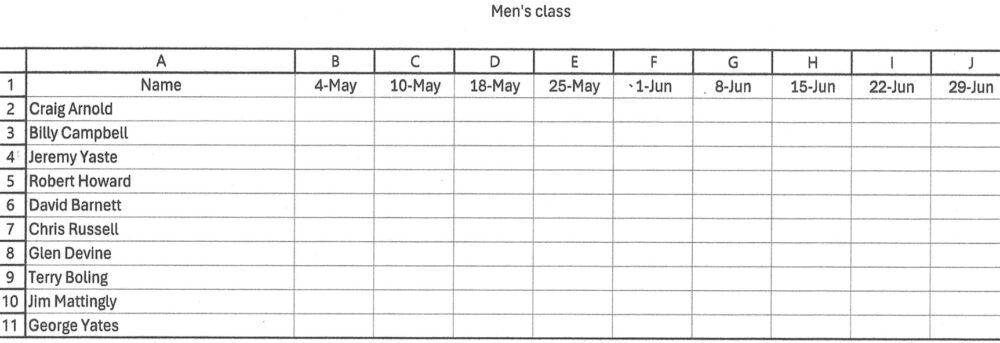Within three months of accepting the pastor position of Living Hope church, Gerald called for outside help from his local denomination office. Upon accepting the call to pastor Living Hope, Gerald knew this church had been in decline for nearly twenty years. Seven of these years brought steep decline and the last three years the church was barely hanging on. I give Gerald credit for realizing, being a newcomer, from the outside, this was a task greater than he could accomplish on his own.
The first year for Gerald and Living Hope appeared to be a good year. The decline stopped, the church actually added five people. Though this was a small number, it was a victory against the long-term decline. Gerald and Robert, the denominational leader, had put together a team of five people to work through a process assisting the church to stave off decline and turn around into a growing, healthy body of believers. The team met monthly and formulated strategic plans for the perceived needs of this ailing congregation.
The team developed strategic plans for various aspects of ministry and operations of the church based on the findings of their study. At the end of the first year the team even put together a booklet to distribute to church members and held a meeting with the church body to describe the process they had undertaken and the plans developed.
The second year was established as the year of praying, training, and equipping the congregation in what it would take to implement the strategic plans. Pastor Gerald saw progress and was encouraged by some of the recommendations of the people of his congregation. Training sessions set on regular scheduled days were well attended – Sunday nights and Wednesday evenings. However, the Saturday training events were not well attended. Gerald dismissed it as the culture in which we live and proceeded with training and equipping as designed. While he did have a couple of pressurized meetings with one older couple in the church, Gerald believed overall the church was adapting nicely.
Just about the time Gerald was entering his third year with Living Hope, something happened. Things began to unravel. Gerald could not understand it. After all everything seemed to be going fine. Everyone, well almost everyone, was on board with the changes they were about to implement. The church had been working on these for two years now. Why all of a sudden were people balking? Not only balking, Gerald had just met with two men of the church where one of the men threatened Gerald with his job.
Gerald telephoned Robert requesting a meeting. The two men met for lunch at a nice restaurant with a quieter atmosphere than most. Gerald laid out the whole story to Robert all the way to the threat of losing his job. “I do not understand it.” Gerald stated, almost with a question mark at the end of his statement. They’re not following all of a sudden. What did I do wrong?
Robert, knowing the answer to his question asked, “How long have you been here?
“Three years. I’m starting my third year.” Replied Gerald.
“You have hit the third year wall.” Robert acknowledged. “The third year is your year of implementation. While you have been able to make small changes in these first two years, you are now attempting to change the culture of your church. People will go along with talk about changing the culture. But when making the change affects me personally, then I have a different resolve. Many pastors run into the third year wall, and many leave.
In the ensuing conversation, Robert encouraged Gerald to stay the course, while examining possible reasons for his congregation “digging in their heels.” One statement Robert made that stuck with Gerald was, “Your vision for the church and your administrative operations, along with your strategic plans for change, must be aligned within the current culture in order to build the desired culture.” Gerald asked for clarification.
Robert proceeded, “Aligning with the current culture inside the church will not produce results. It is a culture of status quo and comfort. However, aligning your strategies within the current culture will allow you to develop the desired culture. It is a slow process. Changing a culture requires three to five years. But you have to be willing to stay and work through that third year wall.”
The third year was certainly a tough year for Gerald. Now entering his sixth year with Living Hope church, Gerald can look back at the wisdom in the advice he received in that lunch conversation with Robert. In the most recent eighteen months the church has seen seventeen additions to the church and it is evident the culture of the church is changing, albeit slow, but definite.
For a church to achieve organizational health the pastor’s vision, administrative operations, and the overall strategic plan must be aligned together within the current culture to build the desired culture of the church. A key phrase in the previous statement is, “must be aligned together within the current culture,” not, must be aligned with the culture.
For more information on organizational health of a church contact George Yates and visit SonC.A.R.E. Ministries.
